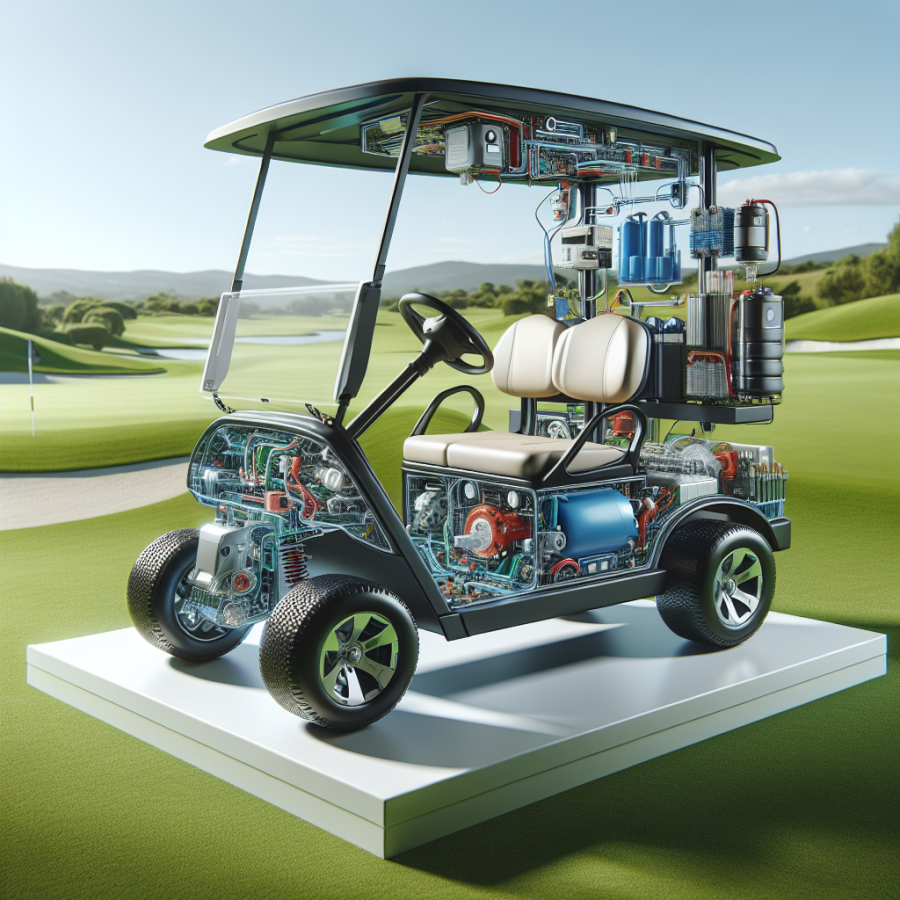Advanced Features and Technologies in Modern Golf Carts
Modern golf carts have experienced commendable technological transformation over the years, making them a fusion of both convenience and innovation. In this advancement, several technical aspects stand out, each contributing to enhanced functionality, comfort, and efficiency.
One paramount feature in newer models is the GPS Tracking System. Bearing in mind how vast some golf courses are, this system integrates with smartphones and provides real-time information related to the cart's location and details about the course including distance covered, layout, and possible hazards. This real-time data plays a massive role in strategic decision-making during golf sessions.
Another critical development is customization. Beyond the standard functionality, golf cart manufacturers now offer customization options that enable you to tailor the cart to your specific requirements. This can range from custom paint jobs to a personalized interior complete with plush leather seats, sound systems, and beverage coolers. Such high-grade amenities provide an unmatched riding comfort, turning a routine golf journey into a luxurious experience.
The incorporation of solar panels in golf carts also stands out. As global emphasis shifts towards renewable energy, some manufacturers are leveraging solar energy as an alternative power source for golf carts. Solar-powered carts not only reduce running and maintenance costs but also aid in environmental conservation by lowering carbon emissions.
The advent of programmable controllers in golf carts is another significant technological stride. The controllers allow for adjustment of ground speed, acceleration rates, regenerative braking strength, and other parameters that enhance the cart’s efficiency and adaptability based on the player's preferences and golf course’s terrain.
The use of Eco-friendly lithium batteries is a shift from traditional acid-lead batteries. They are lightweight, durable, require less maintenance, and provide superior performance. Also, they have a quicker recharge rate, further enhancing the efficiency of golf carts.
Another innovation is the introduction of independent suspension systems. This feature gives golf carts superior handling and improved ride quality. They absorb shock from bumpy courses, guaranteeing golfers an enjoyable and jolt-free ride around the greens.
Further, advances in golf cart safety have not been left behind. With features such as turn signals, brake lights, seat belts and even airbags, modern golf carts have been significantly enhanced to ensure golfers' safety while riding.
Lastly, Connectivity features like Bluetooth and Wi-Fi capabilities have been integrated into modern golf carts. This enables smooth syncing with various devices to enjoy music or other forms of entertainment during a round of golf.
Read also:
Examining the Earnings: A Deep Dive into How Much Soccer Coaches Really Make
Understanding the Basic Functioning of a Golf Cart
Golf carts have become an essential aspect of the golfing scene, making the game faster and more efficient. They have also found utility in non-golf usage such as transportation within gated communities or large office complexes. But what makes a golf cart work? Let's delve deeper into its basic functioning.
At its core, a golf cart operates much like a typical vehicle. It has a steering mechanism, braking system, a motive power source (which could be an internal combustion engine or electric motor), and a set of controls for the operator to manipulate speed and direction.
Now let's talk about the power source. Most golf carts come in either gas-powered or electric forms. Gas-powered golf carts run a small gasoline engine, to which power is supplied from a fuel tank. Operating much like regular cars, the fuel source combusts, driving the piston and turning the crankshaft, which in turn propels the vehicle forward.
On the other hand, electric golf carts run on battery power. An electric motor uses the energy from the batteries to generate movement. When the current is supplied from the batteries, it creates a magnetic field which then instigates the armature to spin, and this rotation is harnessed to propel the cart.
Next, the driver controls the speed and direction via a pedal and steering system. Depending on the model, some carts may have more advanced features like automatic speed control.
The steering mechanism quite resembles those of regular cars. It is typically a rack and pinion system where the rotation of the steering wheel is translated into the linear motion needed to turn the wheels. A small golf cart may have a simple mechanical linkage, while a more luxurious cart may use a hydraulic or electric power assist.
Brakes in a golf cart usually work similarly to those of regular automobiles. Primarily, drum brakes are used in most golf carts. When the brake pedal is pressed, it activates a mechanism that pushes the brake shoes against the inside of the brake drums, creating friction that slows down and eventually stops the vehicle.
The suspension system of the cart is designed to absorb shocks and maintain contact between the tires and the ground. Most carts employ leaf spring suspension with shock absorbers. These parts work together to ensure a smooth ride, even on rough golf courses.
The unique aspect about golf carts, especially in comparison to larger vehicles, is their efficiency and simplicity of design. Most of their systems and functions are stripped down to the most fundamental levels.




